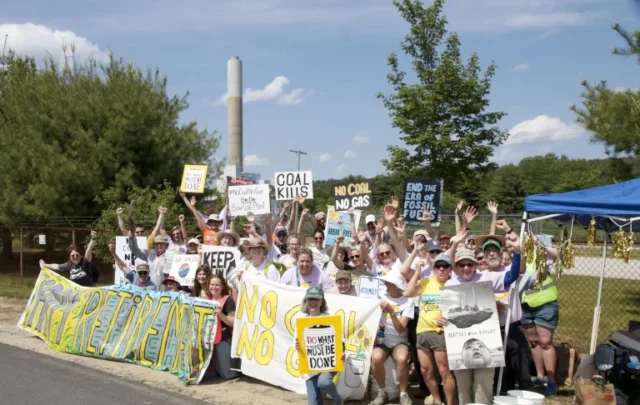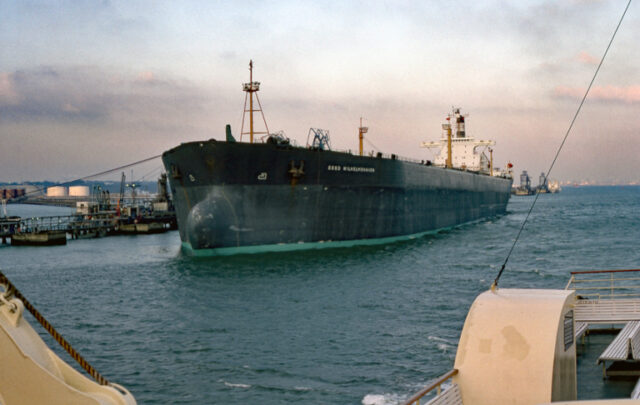Click on the headline (link) for the full text.
Many more articles are available through the Energy Bulletin homepage
The Vulnerability of Energy Infrastructure to Environmental Change
Cleo Paskal, Chatham House
Cleo Paskal’s 12-page analysis of the interaction between climate change and our existing energy infrastructure is concise. It examines hydropower, nuclear power and off-shore oil production. Ms. Paskal also examines the particular vulnerabilities of cold climates and potential geopolitical developments. Her only significant omission was the particular vulnerability of some of the world’s largest petroleum facilities (eg. Ras Tanura and Rotterdam) to sea level rise (given that their elevation is only single-digits above sea level). Her analysis addresses a rather overlooked issue… one which could certainly have a significant effect on the peaking of global energy production.
It is well worth examining.
Submitted by EB contributor Rick Munroe.
(20 April 2009)
“New” Nuclear Reactors, Same Old Story
Amory Lovins, Rocky Mountain Institute
The dominant type of new nuclear power plant, light-water reactors (LWRs), proved unfinanceable in the robust 2005–08 capital market, despite new U.S. subsidies approaching or exceeding their total construction cost. New LWRs are now so costly and slow that they save 2–20x less carbon, 20–40x slower, than micropower and efficient end-use. As this becomes evident, other kinds of reactors are being proposed instead—novel designs claimed to solve LWRs’ problems of economics, proliferation, and waste. Even climate-protection pioneer Jim Hansen says these “Gen IV” reactors merit rapid R&D. But on closer examination, the two kinds most often promoted—Integral Fast Reactors (IFRs) and thorium reactors—reveal no economic, environmental, or security rationale, and the thesis is unsound for any nuclear reactor.
… Small reactors
Toshiba claims to be about to market a 200-kWe nuclear plant (~5,000x smaller than today’s norm); a few startup firms like Hyperion Power Generation aim to make 10¢/kWh electricity from miniature reactors for which it claims over 100 firm orders. Unfortunately, 10¢ is the wrong target to beat: the real competitor is not other big and costly thermal power plants, but micropower and negawatts, whose delivered retail cost is often ~1–6¢/kWh.11 Can one imagine in principle that mass-production, passive operation, automation (perhaps with zero operating and security staff), and supposedly failsafe design might enable hypothetical small reactors to approach such low costs? No, for two basic reasons:
- Nuclear reactors derive their claimed advantages from highly concentrated sources of heat, and hence also of radiation. But the shielding and thermal protection needed to contain that concentrated energy and exploit it (via turbine cycles) are inherently unable to scale down as well as technologies whose different principles avoid these issues.
- By the time the new reactors could be proven, accepted by regulators and the public, financed, built, and convincingly tested, they couldn’t undercut the then prices of negawatts and micropower that are beating them by 2–20x today— and would have gained decades of further head start on their own economies of mass production.
In short, the notion that different or smaller reactors plus wholly new fuel cycles (and, usually, new competitive conditions and political systems) could overcome nuclear energy’s inherent problems is not just decades too late, but fundamentally a fantasy. Fantasies are all right, but people should pay for their own. Investors in and advocates of small-reactor innovations will be disappointed. But in due course, the aging advocates of the half-century-old reactor concepts that never made it to market will retire and die, their credulous young devotees will relearn painful lessons lately forgotten, and the whole nuclear business will complete its slow death of an incurable attack of market forces. Meanwhile, the rest of us shouldn’t be distracted from getting on with the winning investments that make sense, make money, and really do solve the energy, climate, and proliferation problems, led by business for profit.
(6 May 2009)
Safety threat to planned nuclear power stations
Geoffrey Lean, The Independent
Britain’s plans to build a new generation of nuclear power stations have been thrown into jeopardy by startling official safety fears. The nuclear regulatory body in Finland, where the first of the reactors is being built, has taken the extraordinary step of threatening to halt its construction because it has not been satisfied that key safety systems will work.
STUK, the Finnish government’s Radiation and Nuclear Safety Authority, says that “evident errors” have not been corrected more than a year after it raised its concerns and condemns the “lack of professional knowledge” of people working for the firm responsible for its design and construction.
This is an unexpected, and potentially devastating, blow because one of the main selling points of the new European Pressurised Reactor (EPR) has been that its safety systems will work far better than those in current reactors. It is particularly important that they do because, as The Independent on Sunday reported in February, they will produce many times as much radiation that could be rapidly released in the event of an accident…
(10 May 2009)





